
25 minute read
LOCAL PAGES
Improving transmission systems expensive but necessary
Having lived in Ohio for almost 11 years now, my wife and I were reminded again over the holidays that Columbus is a 500-mile drive to something like half the US population. You see, one of our sons lives in New York City and was able to “carpool” home to celebrate Christmas with the family. In addition to taking in all that Ohio has to offer (which is a lot), we have certainly appreciated that we can simply get in the car and travel to some of the best sights and sounds the U.S. has to offer. We could not do that without the benefit of an interstate highway system. The decades-old interstate highway system is a marvel of efficiency, moving tens of thousands of cars each day, but it is aging and in need of upgrades to keep things moving smoothly with today’s modern transportation needs. Like the highway system, our nation’s electric transmission system is an incredible network that serves us well, despite its age. Moving bulk power at high voltages over long distances, from power plants hundreds of miles away to substations, the power is eventually stepped down to a voltage that is safe to power your home. Both systems, despite being the achievements of engineering and technology that they are, require a steady stream of repairs, upgrades, and modernizations to keep things flowing smoothly and support our 21st-century demands. On a road trip, every time you stop to fill up the tank, part of the cost you are paying for gasoline goes to pay for those annoying orange barrels, and everything around them that eventually improves the driving experience for all of us. And in case you’re wondering if EV drivers get off scot-free, don’t worry — in Ohio, EV drivers pay an annual fee over and above their vehicle registration to ensure they are contributing to road upkeep as well. Similarly, every time you pay your power bill, some of those hard-earned dollars you’re sending our way get passed directly on to our transmission providers to pay for upkeep and needed improvements to the transmission system. On your next road trip, keep an eye out for transmission lines. You can easily spot them along the interstate corridors in Ohio and elsewhere, as their large metal towers can carry wires up to 200 feet in the air, making them easy to distinguish from our distribution lines that are on wooden poles along the road closer to your home. If you look closely, chances are good that you’ll see at least some of those transmission lines in some state of repair, upgrade, or replacement. This work is essential, in part because the age of these systems require it, but also because our modern power systems must increasingly accommodate power from intermittent sources like solar and wind alongside our traditional baseload generation sources like coal, nuclear, and natural gas. But that work does come at a cost that we must all bear, and like so many things in today’s world, those costs continue to rise.
Transmission costs make up one portion of your bill that continues to rise. Other costs are rising for South Central Power as well – last month, I shared with you how the cost of items like the poles, transformers, and wire we use to build and maintain our system are increasing by as much as 64% over the last year. This is also the time of the year when management presents the annual budget to the Board of Trustees. Balancing our fiscal responsibility, rate competitiveness, and the rising costs of material, equipment, labor, and most everything else is proving to be a challenge. Our outlook for 2023 does show that an increase in the rates will be necessary to continue delivering an acceptable level of service for you, our members. I expect that this rate adjustment will be modest when compared to the inflation we see in our daily lives, yet we know that every dollar you spend on energy takes away from something else. We see the opportunity to serve you as a privilege, and my commitment to you is that for each dollar we receive, we will invest it wisely. Even in the face of rising costs, there are ways to lower your energy bill. Keep an eye on this magazine, our social media channels, and our website for energy tips that can help you save. You are also always welcome to reach out to our team for advice on lowering your bill by making your home more efficient and other ways to use energy wisely.
Rick Lemonds PRESIDENT AND CEO
Keeping the power on takes a team
No matter the conditions, your South Central Power team works around the clock to provide members access to dependable service.


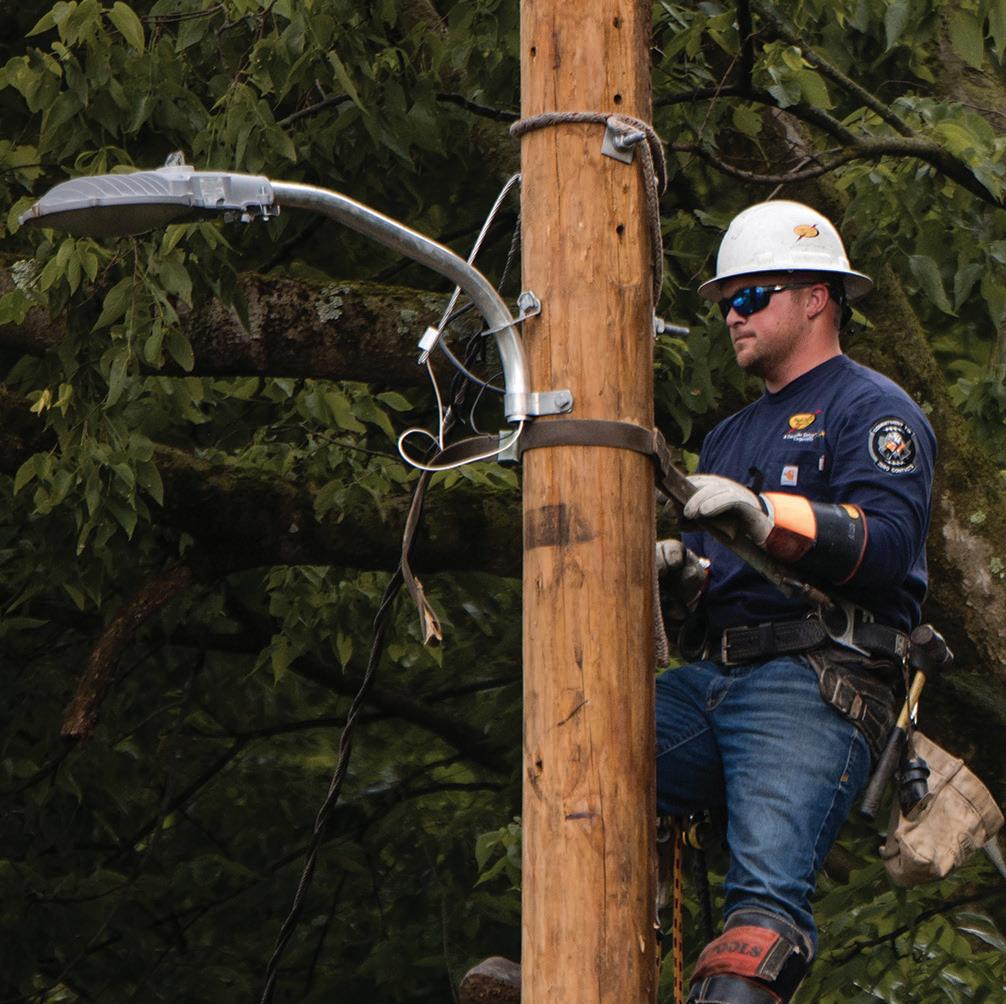

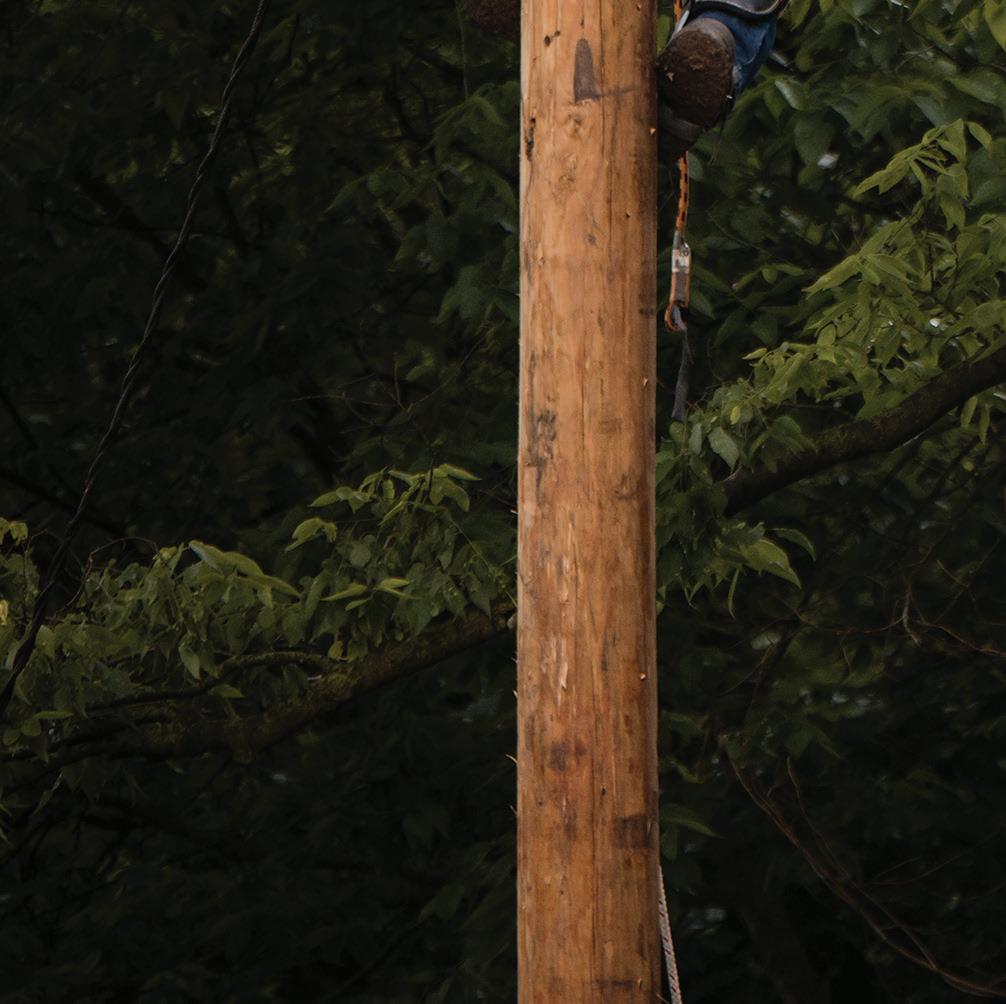
Lineworkers keep the lights on
When bad weather is about to hit, whether that’s a small local storm or a big one like last February’s ice storm, crews start preparing their bucket trucks and other equipment to head out to restore power. They load up their trucks with equipment, spools of wire, poles and transformers, tire chains in the winter, and other safety measures. Then they head out to your homes, farms, and businesses to work tirelessly until everyone’s power is restored, whether that’s in an hour or several days later. But what happens on an average day when there are few to no outages? Our line crews are still busy doing tasks to keep the power on. They may be out installing electrical lines to newly built homes or businesses, maintaining and upgrading existing lines, or repairing equipment on poles. They may be replacing poles that are damaged or rotted, or upgrading underground lines. They could be standing by with vegetation crews that are flying an aerial trimmer to trim trees in case an outage occurs. They also are spending time in safety briefings and training.


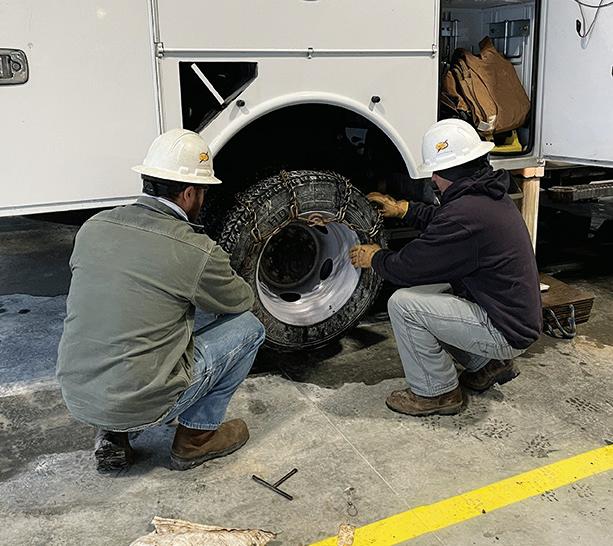
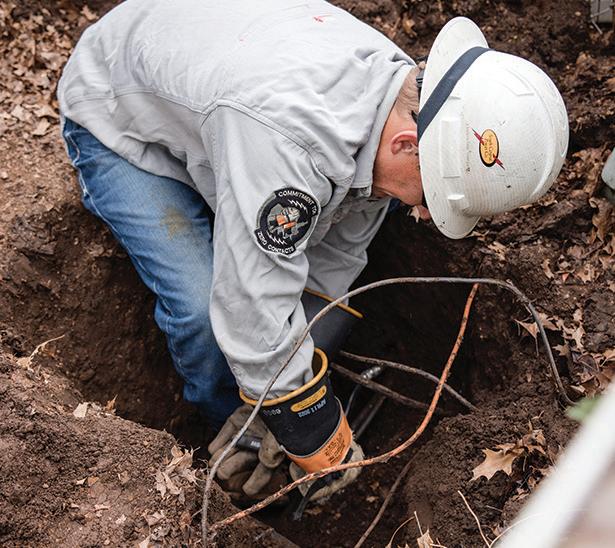


A crew drills before placing a new pole. Lineworkers mount chains on bucket truck tires in preparation for restoring a large winter outage. A lineman upgrades underground lines.


Other members of the team
Keeping the power on for our 123,000 member accounts also requires a team of many other employees including utility foresters, fleet mechanics, engineers, dispatchers, metering specialists, warehouse workers, and more. They are responsible for clearing rights-of-way, maintaining and upgrading substations, and designing our electrical grid. They maintain our vehicles so our trucks are ready to roll and ensure we have the equipment we need at the ready as supplies are depleted. And supporting all of these workers are many other employees in jobs like member service and accounting, information technology and procurement, energy services, and community and economic development. When you talk with a member service representative or see a crew out working, you can be confident that each of our 250 employees contributes to ensuring you have dependable service — and keeping power on.


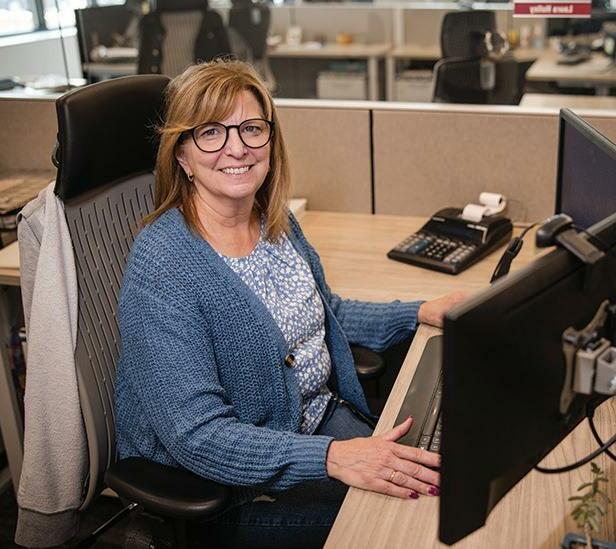
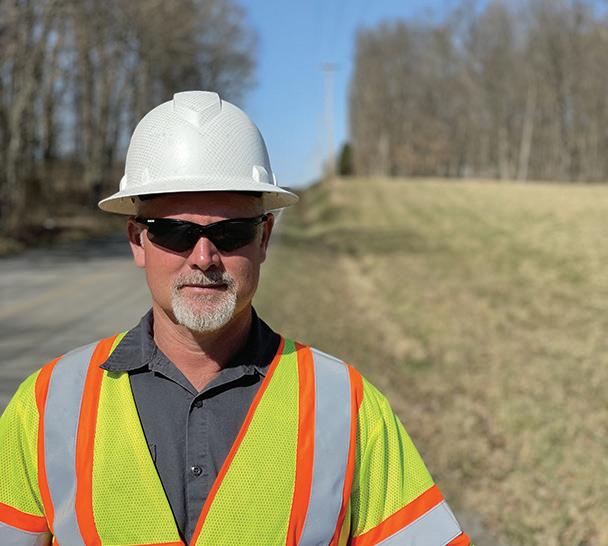
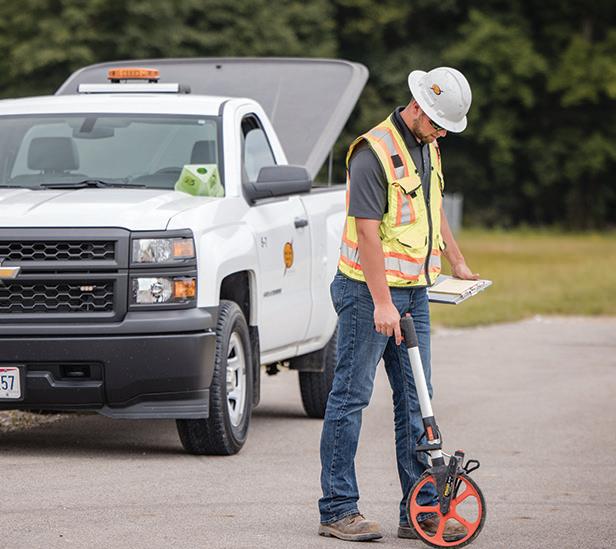
Member service representatives Utility foresters Engineers


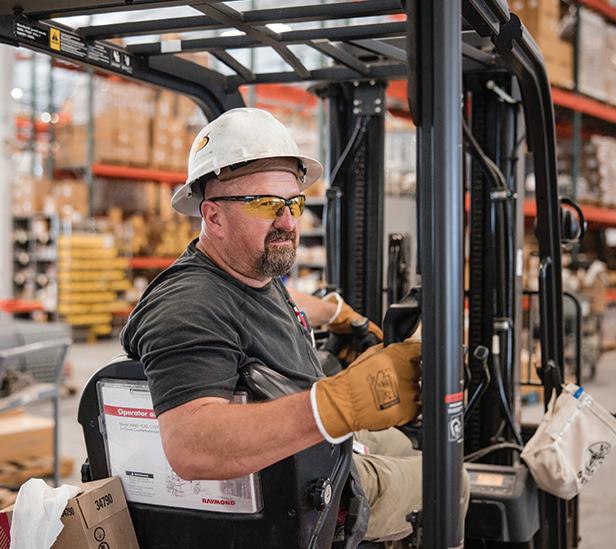

Warehouse workers Information technology Energy services


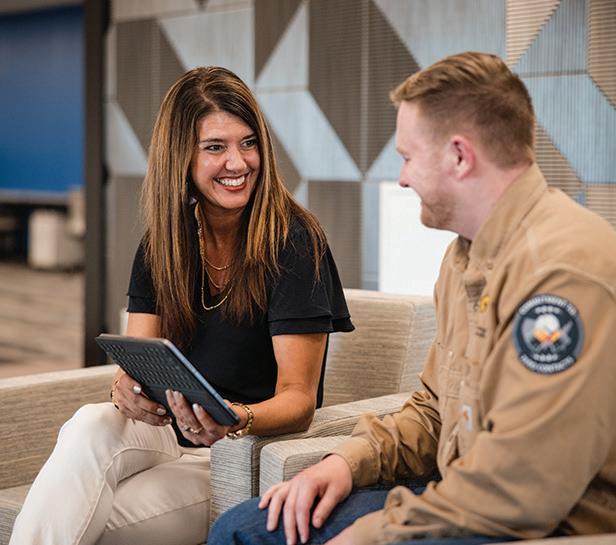

INTERESTED IN JOINING THIS GREAT TEAM OF EMPLOYEES?



We’re hiring, so check out the careers page on our website to see what jobs are available.
Scan to learn more or visit www.southcentralpower.com/ about-us/careers.
High school juniors!

Interested in a life-changing leadership experience in Washington, D.C.?
For more information and to apply, visit www. southcentralpower.com/ community/youth-tour.



What is Youth Tour?
Youth Tour is an annual leadership program sponsored by South Central Power Company. It’s a weeklong, all-expensespaid trip to Washington, D.C., that gives exceptional high school students the opportunity to meet with their congressional leaders at the U.S. Capitol, make new friends from across the state and country, and see many of the famous Washington sights.
Application deadline is March 1 at 11:59 p.m.
June 17–23, 2023
Statement of nondiscrimination
In accordance with Federal civil rights law and U.S. Department of Agriculture (USDA) civil rights regulations and policies, the USDA, its Agencies, offices, and employees and institutions participating in or administering USDA programs are prohibited from discriminating based on race, color, national origin, religion, sex, gender identity (including gender expressions), sexual orientation, disability, age, marital status, family/parental status, income derived from a public assistance program, political beliefs, or reprisal or retaliation for prior civil rights activity, in any program or activity conducted or funded by USDA (not all bases apply to all programs). Remedies and complaint filing deadlines vary by program or incident.
Persons with disabilities who require alternative means of communication for program information (e.g. Braille, large print, audiotape, American Sign Language, etc.) should contact the responsible Agency or USDA’s TARGET center at 202-720-2600 (voice and TTY) or contact USDA through the Federal Relay Service at 800-877-8339. Additionally, program information may be made available in languages other than English.
To file a program discrimination complaint, complete the USDA Program Discrimination Complaint Form, AD-3027, found online at www.ascr.usda.gov/complaint_filing_cust.html, or send a letter with all information requested in the complaint form to U.S. Department of Agriculture, Director, Office of Adjudication, 1400 Independence Ave., S.W., Washington, D.C. 2025-9410 or via email to program. intake@usda.gov.
SOUTH CENTRAL POWER COMPANY MISSION STATEMENT
Our cooperative exists to add value to the lives of our members by delivering safe and dependable service.
HAVE A STORY SUGGESTION?
Email your ideas to: communications@southcentralpower.com
LANCASTER
720 Mill Park Drive Lancaster, OH 43130
HILLSBORO
12385 U.S. Route 50 Hillsboro, OH 45133
CONTACT
800-282-5064 www.southcentralpower.com SouthCentralPower
@SouthCentralPow
BARNESVILLE
37801 Barnesville-Bethesda Road Barnesville, OH 43713
OFFICE HOURS
Monday–Friday 8 a.m.–5 p.m.
Pee Pee Creek?
Each of Ohio’s unique place names is a chapter in the state’s story.
BY CRAIG SPRINGER
An Ohio map reads like an autobiography. The names pinned to places — the towns, counties, watercourses, and junctures that you may have never even heard of — tell stories of experience, chance encounters, longings for a better future, or the wistful wishing for a place left behind. Some pay tribute to heroes of the past. Others are curious and comical, leaving one to wonder, “Uh, what were they thinking?” The gouging push and soggy pull of glaciers and the long steady movement of water shaped the land we see today, and strongly influenced names given the sinuous blue-line waters draining north to Lake Erie or south toward the Ohio River. Then there’s the spilling of blood — the clash of cultures and struggle to possess what Native Americans, the British, and a fledgling United States of America all wanted to call their own. Let’s consider the latter first.
Four Mile Creek, for example, rises in the uplands along the Indiana-Ohio state line, picking up the waters of small rills and runs and seeps. It bumps into glacial moraines and purls through pastoral farmsteads on its downhill destiny with the Great Miami River — by which time it has become a substantial stream. Its placid form and lyrical name belie the fact it was born from warfare. In October 1791, the entirety of the U.S. Army set out from a freshly built Fort Hamilton (named to honor Secretary of the Treasury Alexander Hamilton) and nested on a bench of land above the Great Miami River. The autumn foray would become a march to massacre. The soldiers, in a slow slog north, cut a road in a wide swath through virgin forest. Four miles from the fort’s gate, the army camped for a night along a stream. The next day, three miles on, they crossed Seven Mile Creek. A month later, on the headwaters of the Wabash River, they met a confederation of Indian tribes and suffered a crushing defeat. It became known as St. Clair’s Defeat. The battle site where upwards of 800 soldiers exhaled their last is today’s Fort Recovery. Those vanquished under the command of the Miami leader, Little Turtle, or the Shawnee leader, Blue Jacket — such as Arthur St. Clair, Richard Butler, and William Darke — live on in stream, county, and township names. Of course, Native American place names also persist in Ohio. The difference is that they tend to be descriptive, rather than tributes to people or commemorative of experiences. “Miami,” of course, lives large in Ohio. According to linguist David Costa of the Myaamia Project at Miami University in Oxford, the Great and Little Miami river names include an adopted English use of the original Myaamia, meaning “downstream person.” According to Costa, Miami Indians knew the Great Miami River as ahseni siipiiwi, literally “Rock River.” Lake Erie was known as ciinkwihtanwi kihcikami, literally “sea of the falls,” referring to Niagara Falls downstream. St. Mary’s River on the Indiana-Ohio state line was nameewa siipiiwi, literally “sturgeon river.” You won’t find any of those on a map, though you will find numerous Anglicized versions of Algonquin and Iroquois words — Coshocton, for example, comes from the Lenape/Delaware word goschachgunk, which simply signified a river crossing. Ohio has a fair number of communities with stilted names that speak to high aims of its early settlers. Akron derives from Greek for “high place.” Gallipolis evokes a sense of the Greek city-state self-governance. Xenia reflects the hospitality expected in the home in classical Greece. Alert Station is a curious hamlet near Ross (formerly Venice, corrupted from Venus), northwest of Cincinnati (so-named after the Roman soldier-farmer Cincinnatus). Alert was and remains a crossroads. But those pioneer settlers valued literature and ensured early on they had a library populated with the classics, and the folks there were considered “alert,” as in “intellectual.” Ohio had no shortage of volunteers answering President Polk’s call to action against Mexico in 1846. A good many Ohioans served in the Mexican War, and the effect of their return in 1848 was certainly felt in new place names. The soldiers may have desired to memorialize those killed in action, or they romanticized the places and people they had met in what is now New Mexico, California, and interior Mexico. Most prominent is Rio Grande,
Ohio, pronounced “RYE-O Grand.” And there are the Buckeye burgs of Vera Cruz, Monterey, and Montezuma, as well as the City of Holy Faith: Santa Fe, Ohio. One cannot consider the topic of Ohio’s place names without addressing those that leave you scratching your head. Ever heard of No Name, Knockemstiff, or Pee Pee Creek? All three exist in southern Ohio, and it’s the origin of the last that’s well-documented. Pee Pee Creek trickles through Pebble Township in Pike County, which had been named by Peter Patrick — who had carved his initials in a stream-side tree circa 1785. Ohio’s place names run the spectrum from commonplace to implausible. One can go to Russia, visit Rome, London and Paris, and take a drive through Mesopotamia — without ever leaving the state. Every place name relates to desires, experience and perception. And what they have in common across that spectrum is enchantment in the spirit of their origins.
toothSweet
Harry Birt’s store has it all — but that candy section keeps the doors open.

STORY AND PHOTOS BY MARGIE WUEBKER
Afaded sign inside this Darke County institution proudly proclaims the store motto: “A balanced diet is chocolate in both hands.” Sweetness certainly comes in all shapes, sizes, colors, and flavors at Birt’s Store in the village of New Weston. The rustic shop typically stocks 350 varieties of candy as Valentine’s Day approaches. Decisions are even tougher at Christmastime, as the shelves get stocked with more than 525 varieties, according to third-generation owner Brad Birt. Double-dipped chocolate peanuts, maple-filled chocolate peanut clusters, chocolate-covered caramels, and chocolate drops top the list of favorites. After all, the love of chocolate spans all seasons. Birt’s grandfather, Harry Birt Sr., unwittingly started a family tradition in the 1920s when he added five cases of white peppermint lozenges, orange slices, and chocolate drops to his general store shelves. The candy arrived via caboose at a nearby train depot, but it was evident that crew members had sampled plenty along the way. Harry Birt Jr., who came on board after World War II, recognized the importance of establishing a niche market in the form of more candy, fresh fruits and vegetables, and deli meats and cheeses. He initially used the family
Brad Birt, representing the third generation of his family to sell candy from the Darke County store, displays some of the sweet treats available in the candy aisle
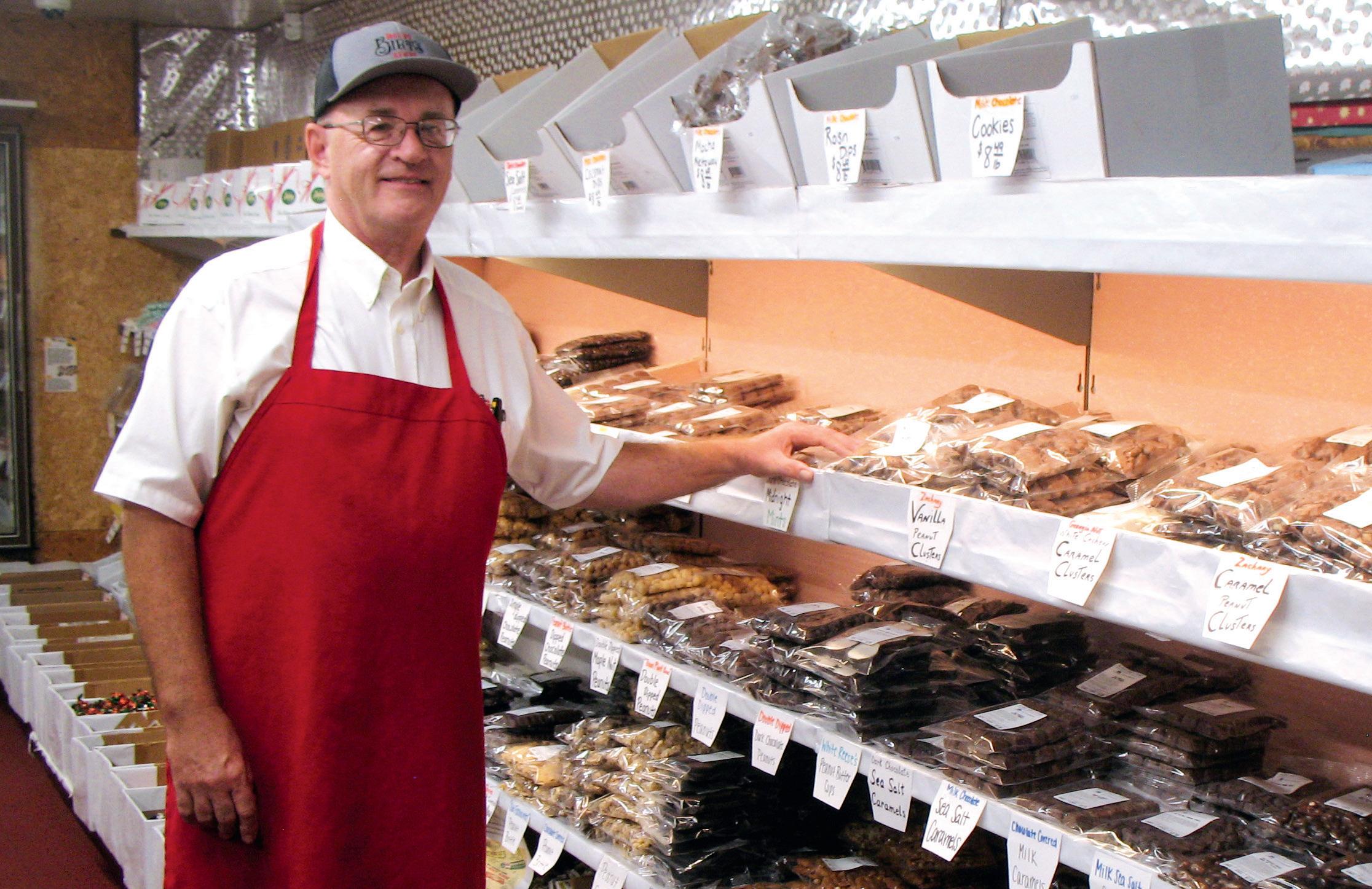





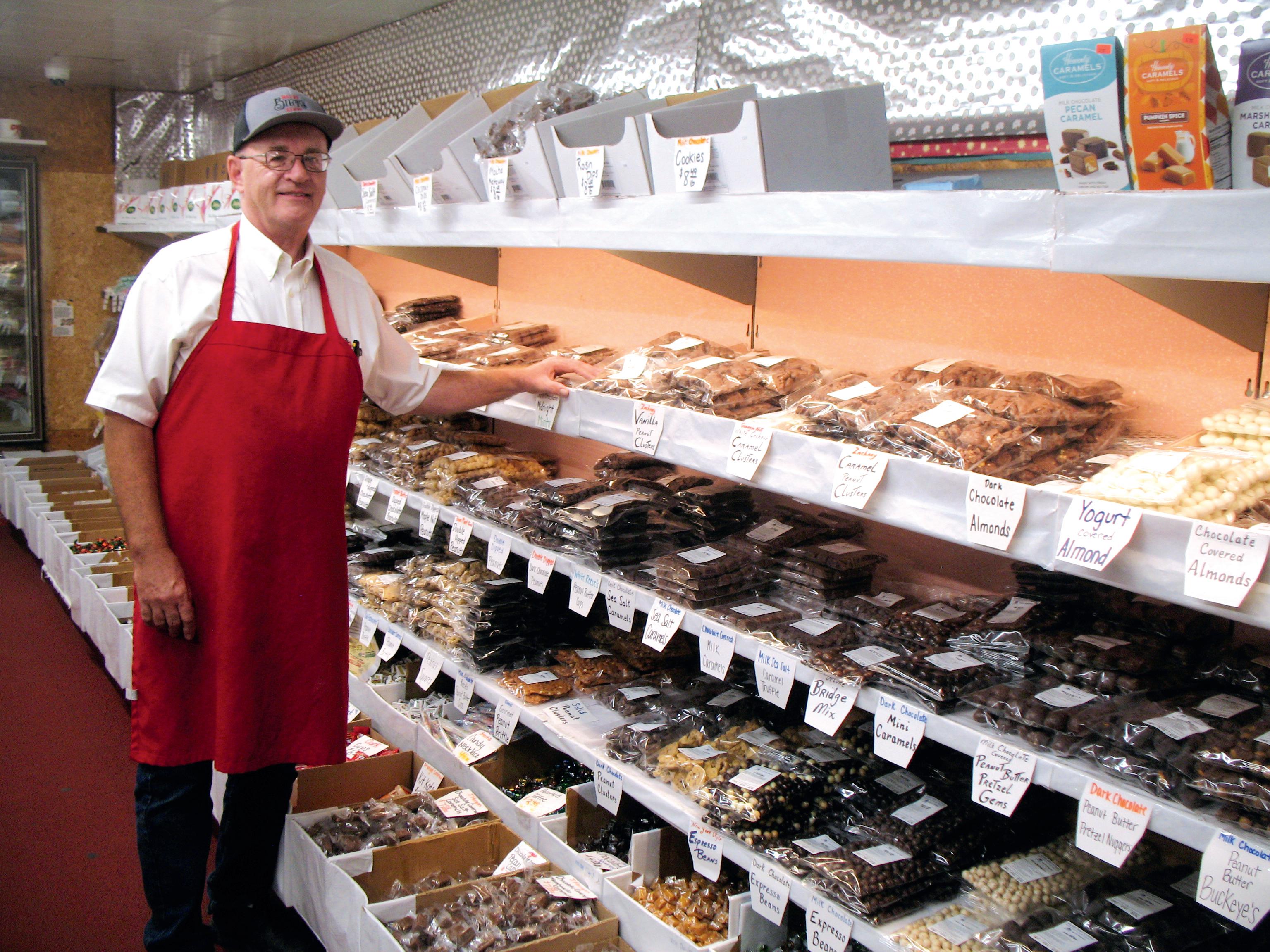



station wagon to pick up orders directly from suppliers. Trucks came later.
“My dad believed people would come if you offered a great product at a reasonable price,” Brad Birt says. “We have built a reputation over decades, and you don’t try to fix something that isn’t broke.” The store deals with dozens of suppliers who share a commitment to quality, requiring regular trips covering Ohio, Michigan, Indiana, Illinois, Kentucky, and Pennsylvania. Holiday shoppers grab silver scoops and white paper sacks to make their bulk selections — though chocolates and other specialties are prepackaged at other times of the year. “Tastes change with age,” Birt says. “Kids are into sour candies and gummy anything these days. Everybody else wants chocolate, chocolate, chocolate, or the candy they grew up with. Folks do a lot of reminiscing up and down the aisles.” Tiered shelves offer a smorgasbord of chocolates: flavored creams, assorted fruits, nuts, fudge clusters, and even coated animal crackers and sandwich cookies. Tenpound slabs of chocolate and 5-pound chunks of caramel are popular with at-home candymakers. Individually wrapped candies like Tootsie Rolls, taffy, and Bit-O-Honey vie for space with flavored jelly beans, jumbo malted milk balls, divinity, old-fashioned hard tack candy, and 1-pound jawbreakers. “My grandfather dealt with candy by the pound,” Birt says. “We deal with candy by the ton. Candy is our niche. It’s what keeps the doors open.”

Harry Birt’s Store, 501 Main St., New Weston. Open seven days a week. www.harybirtsstore.com, www.facebook.com/HarryBirtsStore; 937-338-3111.
Pictured is Luxurious & Lasting Miralux™. Ask about our 5 Comfort Zone chair.
— J. Fitzgerald, VA
OVER OVER 100,000 100,000 SOLD SOLD
3CHAIRS IN ONE:
SLEEP/RECLINE/LIFT
You can’t always lie down in bed and sleep. Heartburn, cardiac problems, hip or back aches – and dozens of other ailments and worries. Those are the nights you’d give anything for a comfortable chair to sleep in: one that reclines to exactly the right degree, raises your feet and legs just where you want them, supports your head and shoulders properly, and operates at the touch of a button. Our Perfect Sleep Chair® does all that and more. More than a chair or recliner, it’s designed to provide total comfort. Choose your preferred heat and massage settings, for hours of soothing relaxation. Reading or watching TV? Our chair’s recline technology allows you to pause the chair in an infinite number of settings. And best of all, it features a powerful lift mechanism that tilts the entire chair forward, making it easy to stand. You’ll love the other benefits, too. It helps with correct spinal alignment and promotes back pressure relief, to prevent back and muscle pain. The overstuffed, oversized biscuit style back and unique seat design will cradle you in comfort. Generously filled, wide armrests provide enhanced arm support when sitting or reclining. It even has a battery backup in case of a power outage. White glove delivery included in shipping charge. Professionals will deliver the chair to the exact spot in your home where you want it, unpack it, inspect it, test it, position it, and even carry the packaging away! You get your choice of Luxurious and Lasting Miralux, Genuine Leather, stain and liquid repellent Duralux with the classic leather look, or plush MicroLux microfiber, all handcrafted in a variety of colors to fit any decor. Call now!


1-888-849-2444
Please mention code 117691 when ordering.
Chestnut Light Gray Saddle Chocolate
REMOTE-CONTROLLED EASILY SHIFTS FROM FLAT TO A STAND-ASSIST POSITION
Genuine Leather
classic beauty & style Miralux™
luxurious & lasting
Long Lasting DuraLux™
Burgundy Tan Chocolate Blue
stain & liquid repellent
Now available in a variety of colors, fabrics and sizes.
MicroLux™ Microfi ber
breathable & amazingly soft
mobility | sleep | comfort | safety enjoying life never gets old™

MAD RIVER MOUNTAIN
Ohio’s largest ski resort turns 70 this year.
BY RANDY EDWARDS; PHOTOS COURTESY OF MAD RIVER MOUNTAIN
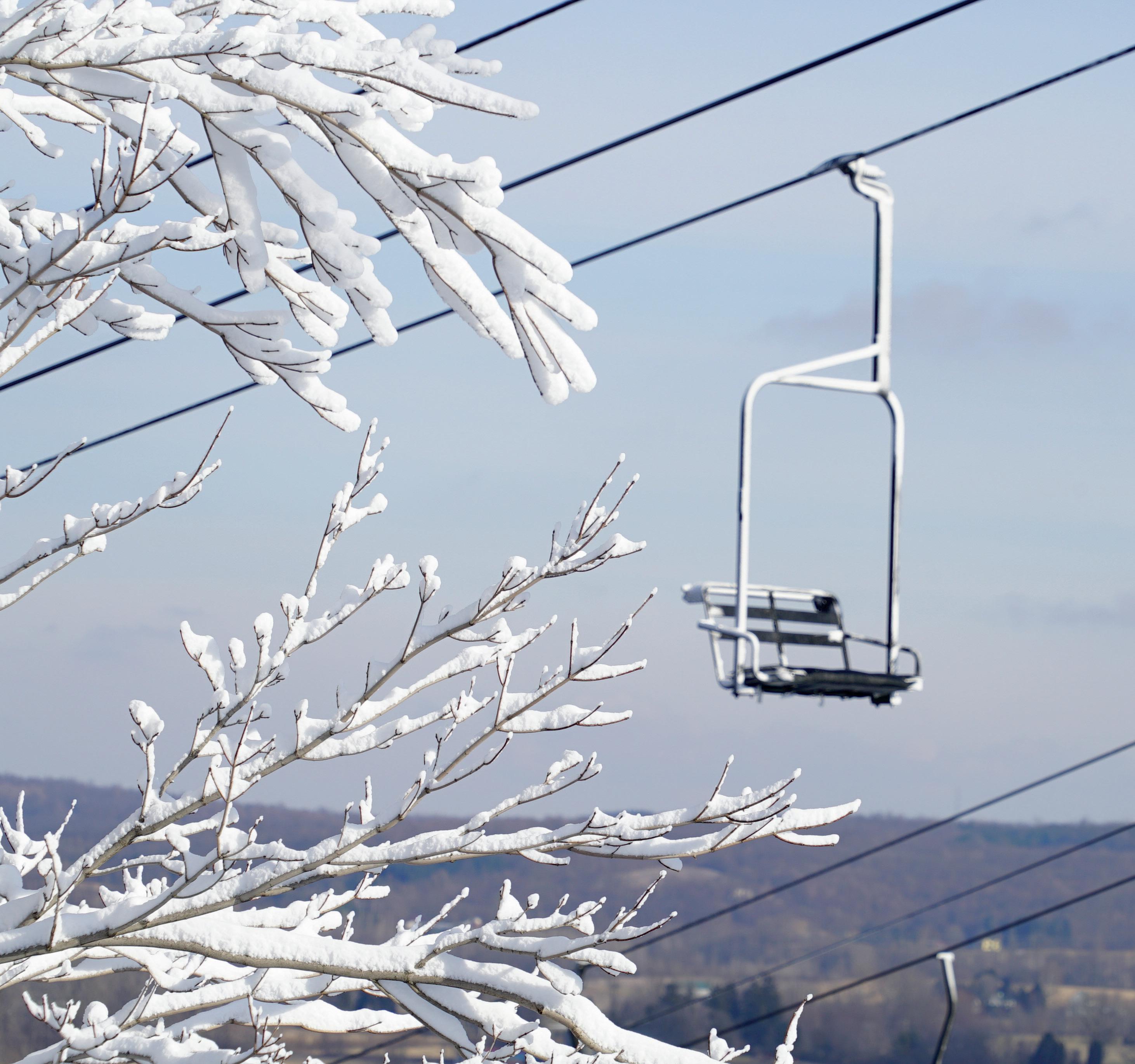
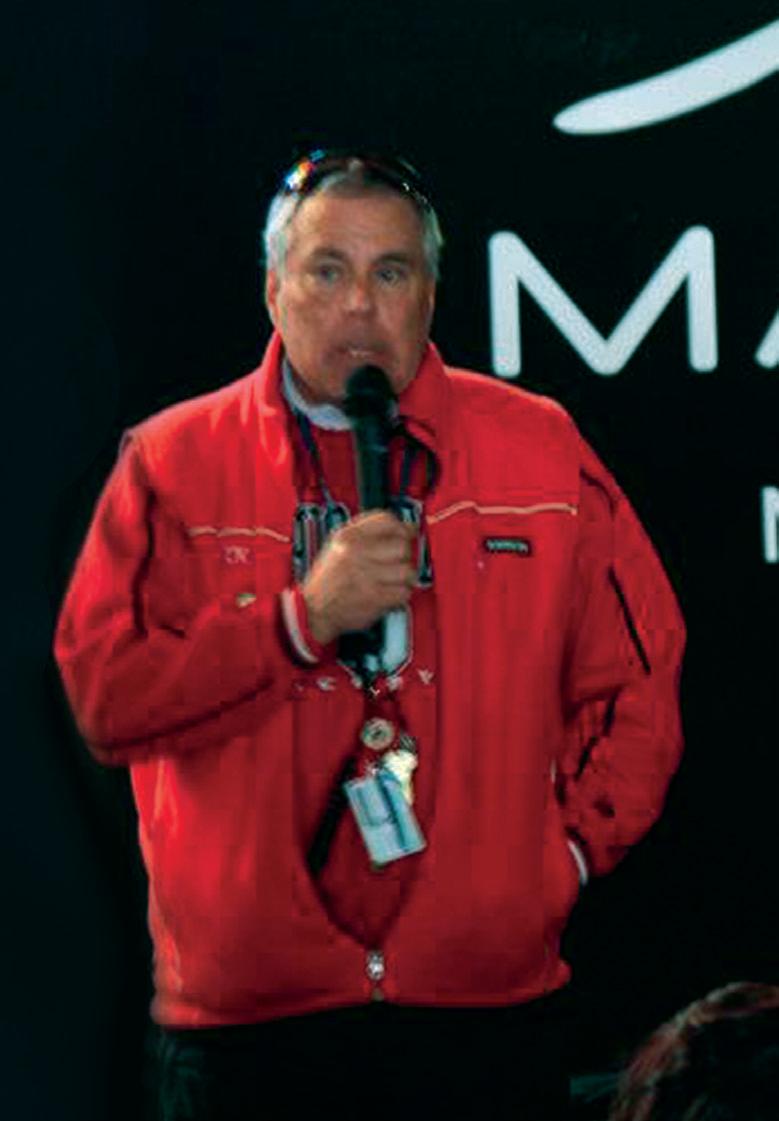
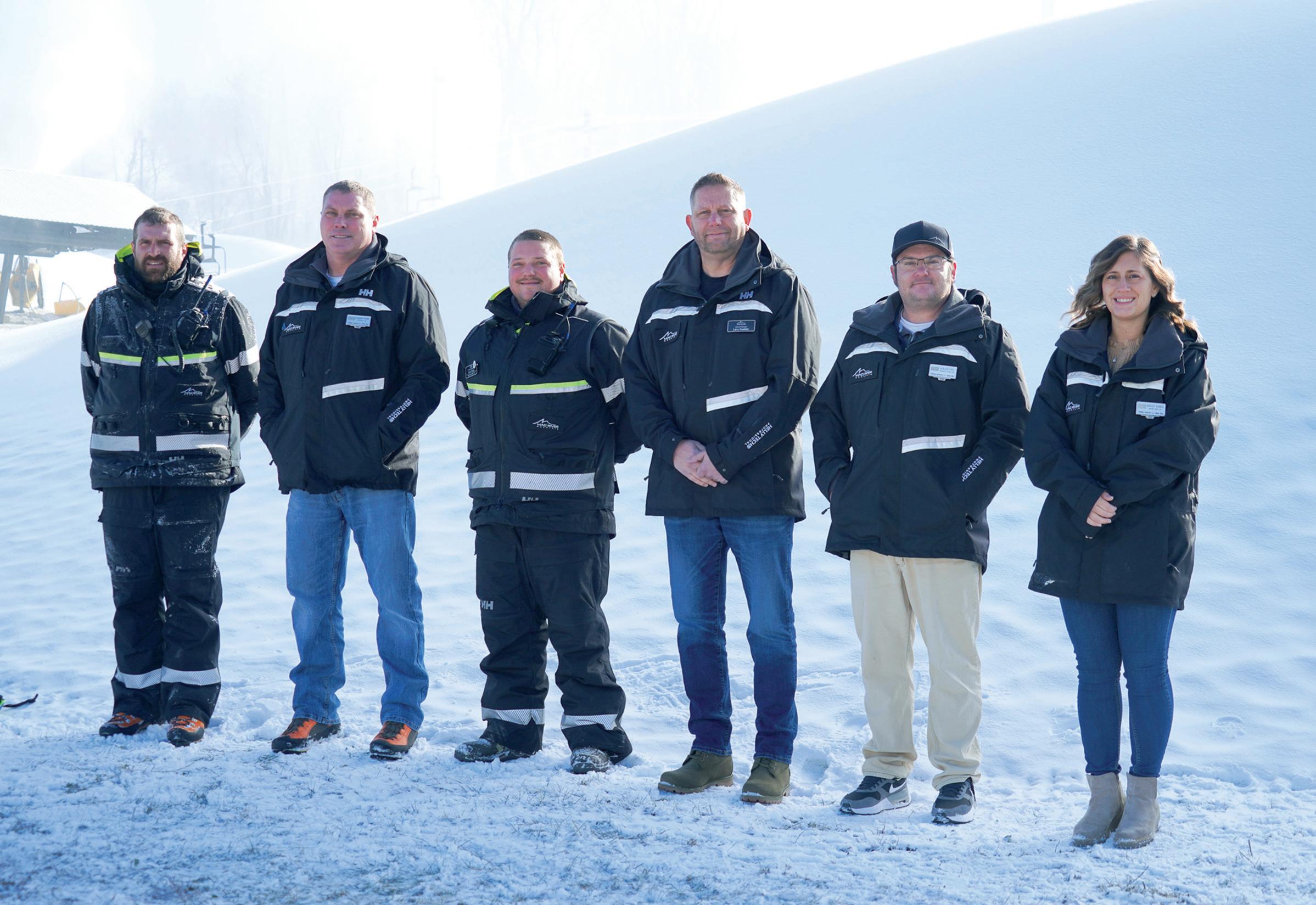
Staff members at Mad River Mountain (left) work to ensure a great skiing and tubing experience for all who visit. John Buchenroth (right) fell in love with skiing as a child, after he took his first lesson at Mad River. He now supervises the resort’s Ski and Ride School.
When he was 12, John Buchenroth received a Christmas gift of $10, which was a considerable sum in 1962. It turned out to be a life-changing gift for the Bellefontaine youngster. Three days later, he put on warm clothes and took his money to the area’s new Alpine ski resort, which had opened for its first season a few days before Christmas that year.
“It was my first day of skiing,” recalls Buchenroth, 73. “The lift ticket was a dollar-fifty, rental was a buck, my first lesson was a buck-fifty. And I fell in love with the sport.”
Sixty ski seasons later, Buchenroth is still in love — and he’s passed along his enthusiasm for skiing to thousands of beginners who have strapped on their first pair of skis at the Logan County resort now known as Mad River Mountain. Buchenroth is supervisor of the Ski and Ride School at Mad River, which celebrates its 60th anniversary this season.
Mad River has been owned by Vail Resorts since 2019, when the Colorado-based company purchased all 17 properties previously owned by Peak Resorts, Inc., including three other Ohio resorts. Mad River isn’t the oldest resort in Ohio — Snow Trails in Mansfield opened a year earlier — but it lays claim to being the largest in the Buckeye State, covering 144 acres, with a peak elevation of 1,460 feet above sea level. The vertical drop is just 300 feet, a molehill compared to ski mountains out West (Vail, the flagship of Mad River’s corporate owner, boasts a vertical drop of 3,450 feet), but this humble Ohio ski hill has been the resort where generations of central Ohioans have learned to ski, either on their own or with their school ski clubs. Olympic and X Games snowboarder Louie Vito, who learned to ski at Mad River, went on to be a superstar. Most others simply move on to bigger mountains but bring their kids back to Mad River to get their start.
“We’re teaching kids and grandkids of people we have had in our programs,” Buchenroth says.
Located in the tiny village of Valley Hi, just outside of Bellefontaine, Mad River Mountain offers 20 ski runs, from the beginner area at the base of the hill to steeper, more challenging slopes and one wooded glade. There is a terrain park for Alpine acrobatics and a tubing park touted as Ohio’s largest. With Ohio winters unpredictable for snow, snowmaking is a must at all Ohio ski resorts, and Mad River has 128 snow guns, capable of covering all 144 skiable acres.
The resort’s new-ish lodge opened in 2016 after a fire destroyed the original lodge in 2015. The new lodge has increased capacity, seating 800 hungry skiers in the cafeteria and about 200 in The Loft bar.
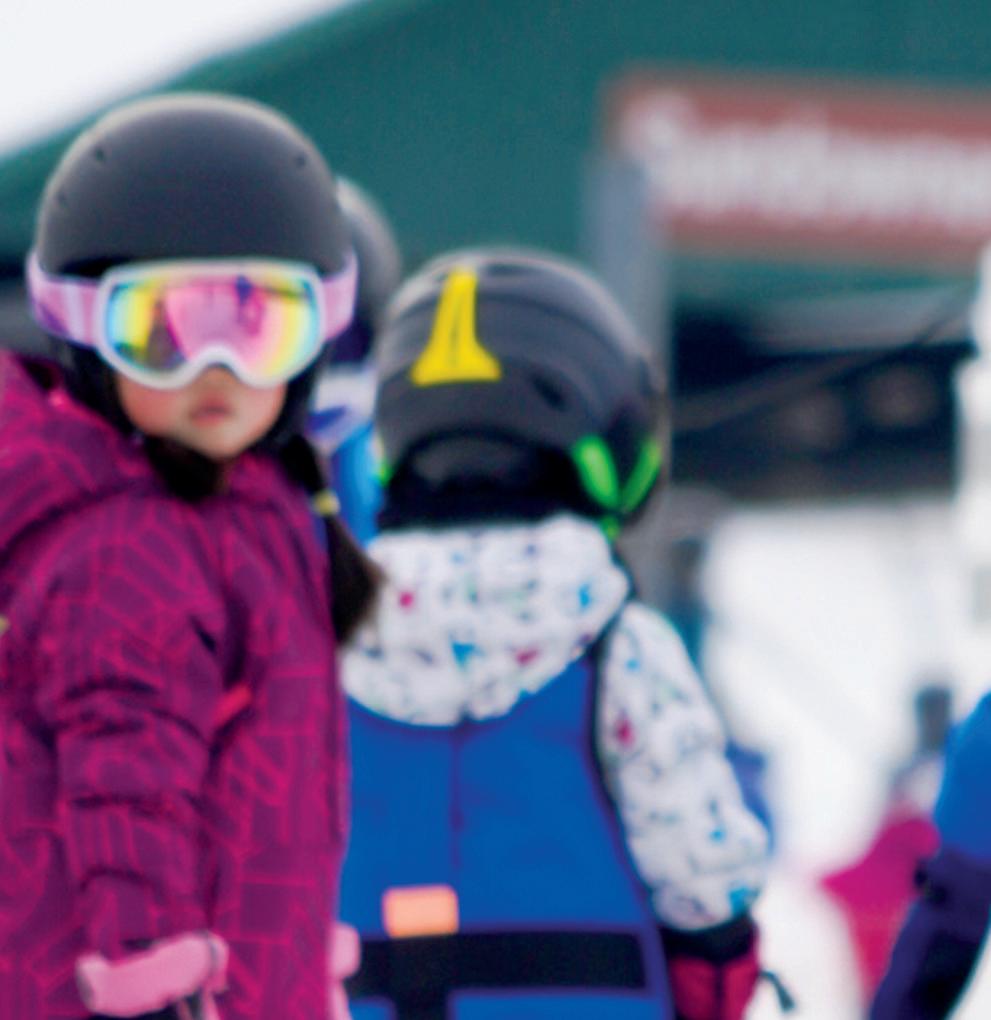


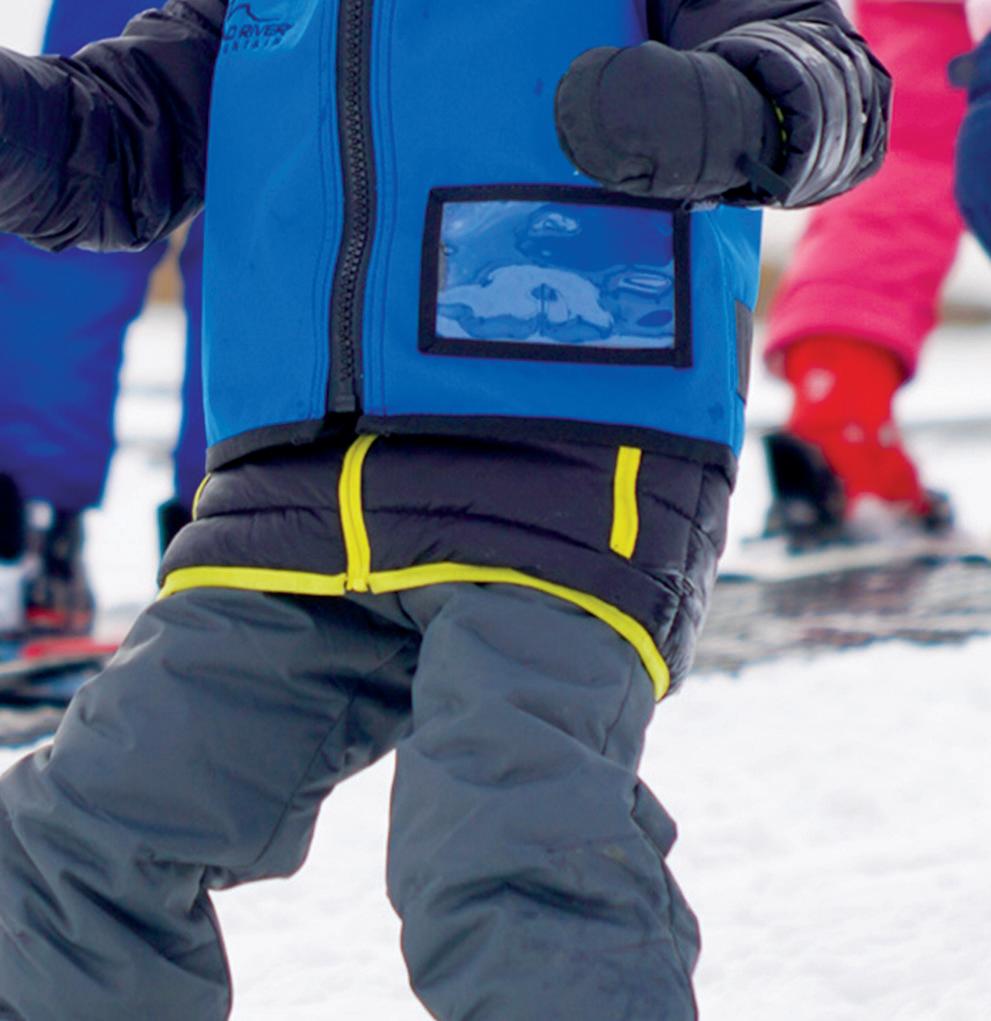
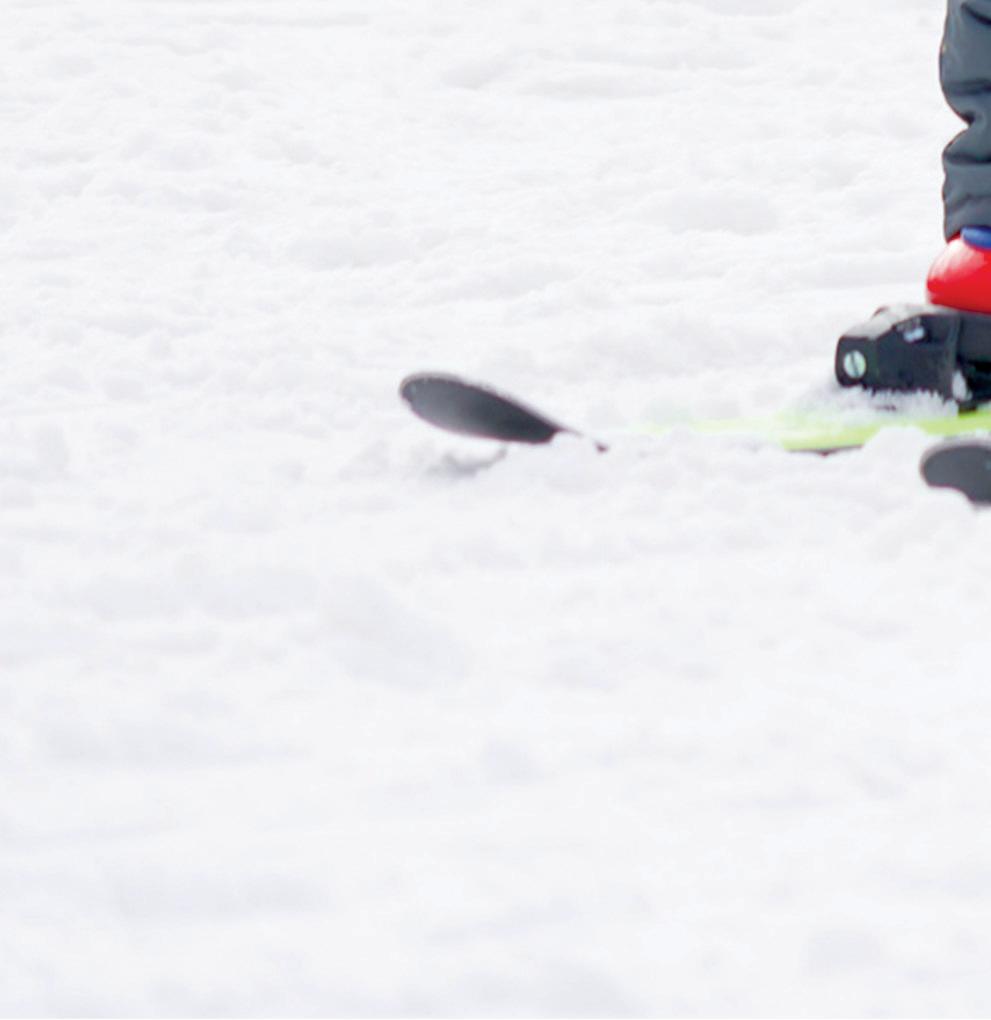

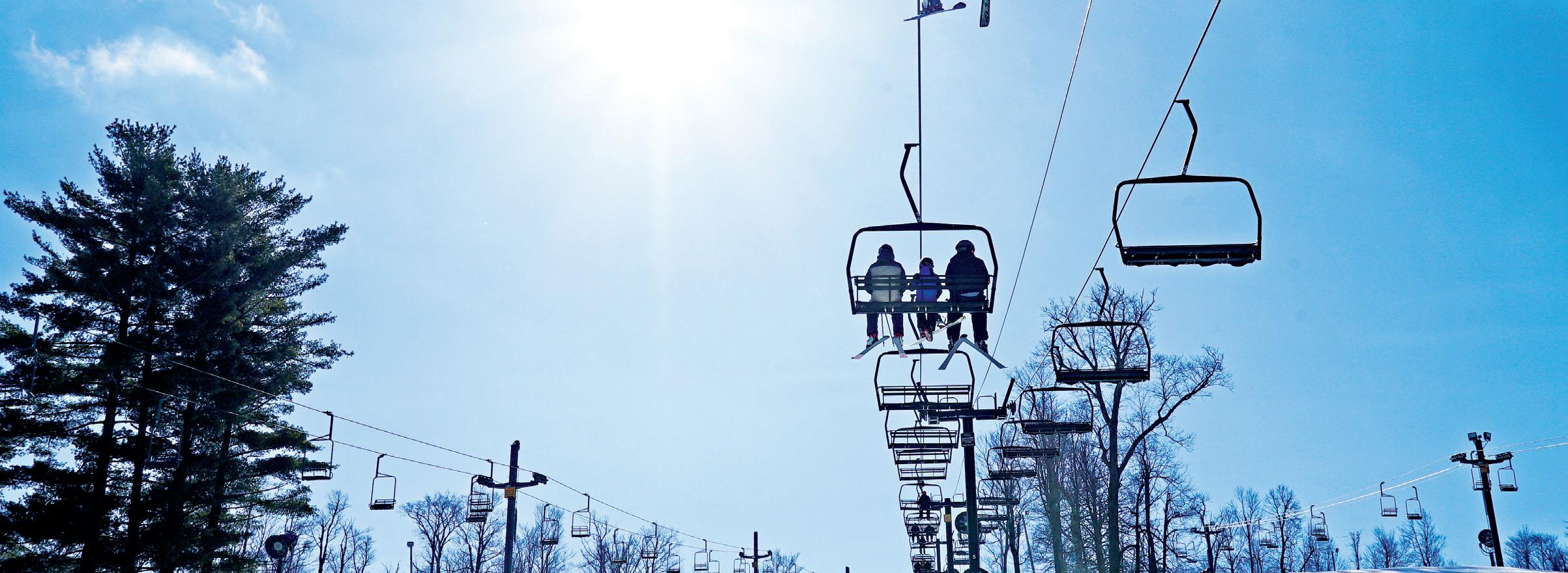
Children have been learning to ski on the slopes at Mad River Mountain since 1962. Today, families enjoy skiing and snowboarding on the resort’s 20 trails and snow tubing on the runs of Ohio’s largest tubing park.
The first couple of years have been a bit rocky for the new owners. The ski industry nationwide took a big hit during the pandemic, and operations during the 2021–22 season at Mad River were curtailed due to labor shortages and warm weather in December, which delayed the resort’s opening until Jan. 6, says Larry Kuebler, general manager of Mad River. “We got a late start [and] we took away some operating hours, and people were not thrilled with that,” he says. “I don’t blame them one bit.”
Kuebler was optimistic as he was preparing for the opening of the 2022–23 season. Vail Resorts promised a $20-an-hour minimum wage for all positions, and Mad River started the season fully staffed, which has allowed a return to normal operating hours. Plans for the 60th anniversary season include weekly events, expanded menu offerings in the lodge, and a return to live music in the bar.
Vail Resorts considers attendance figures to be proprietary, Kuebler said. Prior to the pandemic, the resort’s previous owners said publicly that the ski hill sees about 150,000 skier visits and 40,000 tuber visits per season. Most come from Columbus, Dayton, and other mid-Ohio locations.
“We have so many passionate skiers who have been skiing here for so long, and they’re proud to call it home,” Kuebler says. Over the past couple of decades, downhill skiing has witnessed a participation slump as Baby Boomers are aging out of the sport and not as many younger people are picking it up. Keubler said Mad River’s response has been to focus on recruiting new skiers and getting them involved in the ski school.
“If we’re going to help the overall industry, we have to focus on getting them to love the sport as we do,” he says. School groups can be found at Mad River every night of the week. Many young skiers learn the sport through their school ski clubs, including Brady Whiteside, 18, a graduate of Hilliard Davidson High School who started snowboarding at Mad River in the seventh grade. He learned to ski from Mad River instructors, who “taught us the basics” and inspired self-assurance, Whiteside says, so that later, when he began traveling to ski the much longer and steeper runs at Colorado resorts like Winter Park and Arapahoe Basin, he had confidence in his ability. “You can only prepare so much for those crazy trails [in Colorado], but they took me as far as I could [at a hill the size of Mad River].” Now a freshman at Ohio State University, Whiteside says Mad River can seem small, after skiing the big western mountains, but he will be going back to the local hill this winter.
“It’s close, and when I go to Mad River, I’m going to snowboard with friends,” he says. “We make our own fun.”



